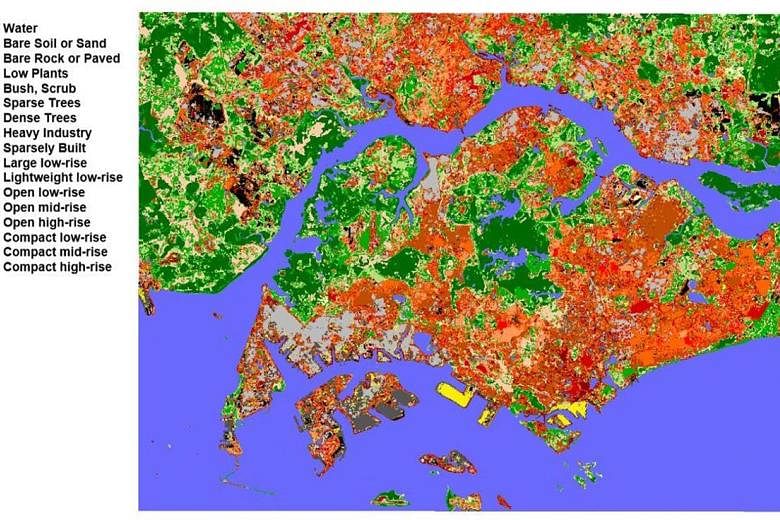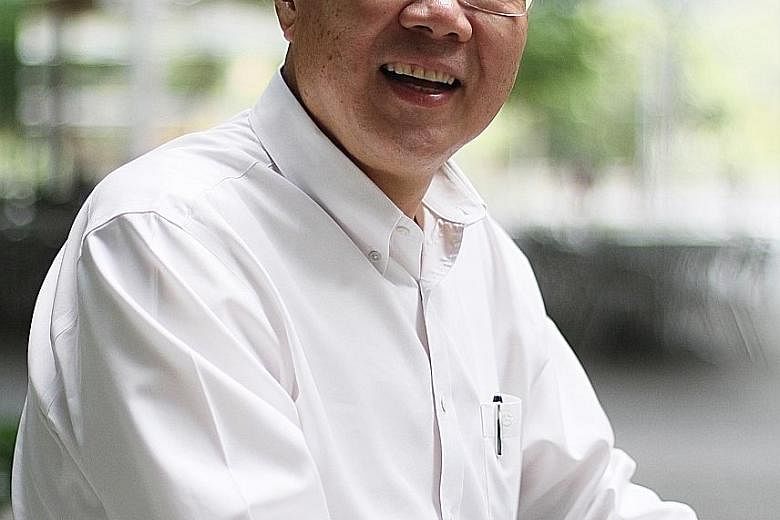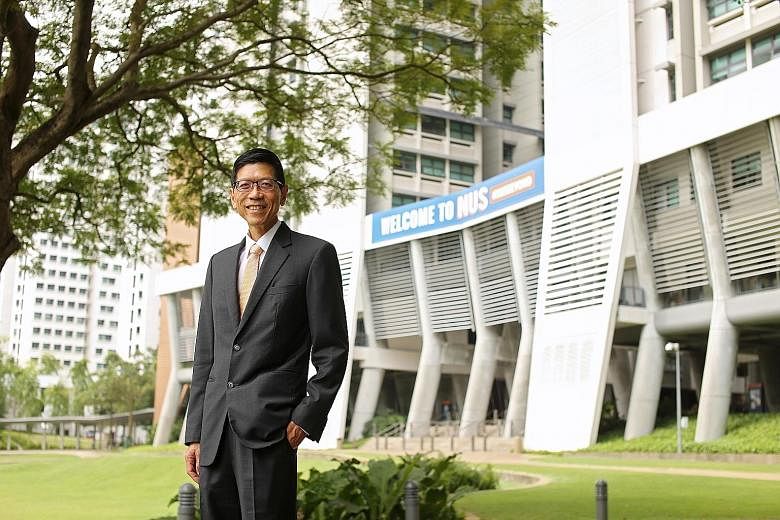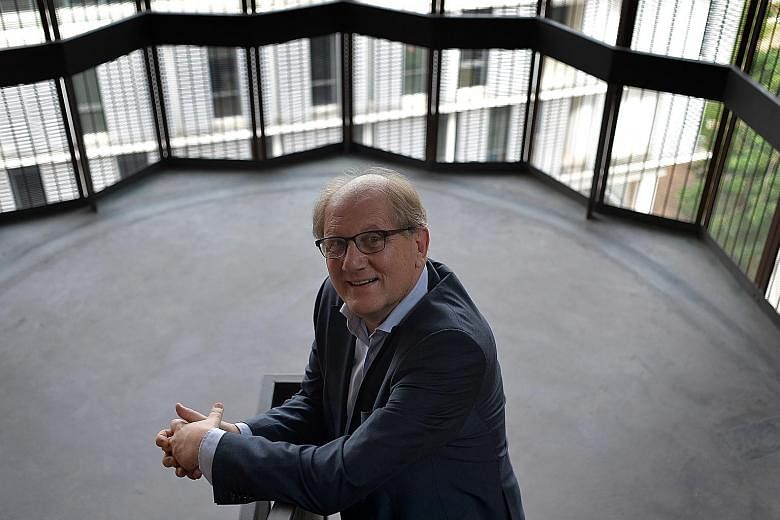Perched along a major expressway in the western part of our sunny island is a campus recognised internationally - where researchers from top universities work with local scientists to develop technology that will improve lives and lead to new enterprises.
The concept for a campus to attract highly regarded research institutions from all over the world to Singapore was conceived more than 10 years ago by former president Tony Tan Keng Yam, who was then chairman of the National Research Foundation (NRF). He had envisioned this strategic move to position Singapore as a global research hub.
That is how the Campus for Research Excellence and Technological Enterprise (or Create) was born. Next month, Create, situated in the National University of Singapore (NUS) University Town, will commemorate its 10th anniversary by showcasing research which has brought practical benefits to Singapore.
The NRF established Create in partnership with a few stringently selected, highly regarded overseas research institutions so that their top researchers would come to Singapore to work closely with local researchers from local universities in areas of strategic interest to the Republic. The research students trained in these collaborations are primarily from local universities. The knowledge acquired from these collaborations would allow the country to grow new industries or solve significant challenges of relevance to Singapore's development and progress. Create has achieved some early successes.
CHOOSING THE RIGHT RESEARCH AREAS
Research topics are identified and proposals jointly crafted to ensure that these topics are strategically relevant to Singapore - either in catalysing economic growth or meeting national challenges - likely to make a significant impact not only in Singapore but also globally, and grounded on excellent science.
The science is then translated into user-ready technologies to solve important challenges that we face. Top researchers from around the world are attracted to conduct their research in Singapore, as the pace of progress offers many opportunities where new ideas can be tested quickly and adopted at scale to demonstrate their tangible impact.
-
400
Number of patents Create entities have filed.
280
Number of invention disclosures they have filed.
Today, researchers from seven overseas partner universities - Massachusetts Institute of Technology (MIT), Swiss Federal Institute of Technology Zurich (ETH Zurich), University of California Berkeley (UC Berkeley), Cambridge University, Technical University of Munich (TUM), Hebrew University of Jerusalem (HUJ) and Shanghai Jiao Tong University - are co-located in Create with researchers from NUS, Nanyang Technological University (NTU), Singapore Management University (SMU) and Singapore University of Technology and Design (SUTD) working on 14 interdisciplinary programmes.
These research programmes encompass more than 50 collaborative projects where overseas partner institutions work closely with local institutions and government agencies to develop new capabilities in the four key technology domains: advanced manufacturing and engineering, health and biomedical sciences, services and digital economy, and urban solutions and sustainability.
A TALENT OASIS
In the face of intense global competition, Create provides a powerful platform that helps attract top-notch talent from leading overseas research institutions. The Create research system comprises more than 1,110 people from over 40 countries, including more than 200 tenured professors from world-renowned universities. By aggregating talent and supporting collaboration between local and overseas researchers, we diversify our talent pool and deepen local capacity to undertake cutting-edge research to meet Singapore's challenges. For instance, Professor Peh Li Shiuan, a Singaporean and professor at MIT, studied low-energy electronics as part of MIT's partnership in Create. She has since joined the Department of Computer Science in NUS as a tenured professor to lead systems research, and is working in Singapore full-time.
The campus provides a vibrant environment for training undergraduate and graduate students. Over the past decade, more than 550 PhD students have been trained at Create, and there are currently 280 PhD, 13 master's and 20 undergraduate students conducting research there.
Create also provides a unique platform for researchers to collaborate on cross-disciplinary research topics important to Singapore and the region. Dubbed "intra-Create" collaborations, researchers pool their collective capabilities for greater synergy.
One example is the "Cooling Singapore" project, where researchers from ETH Zurich, MIT, TUM and NUS work together to develop a road map to reduce Singapore's urban heat island effect. The team will identify key areas of research and develop tools to assess the effects of a range of mitigation measures.
"This is a matter of importance not just for Singapore but for large cities, and Singapore could be the first city in the world to come up with a coherent strategy for tackling what is a very general problem," said Professor Peter Edwards from the Singapore-ETH Centre, one of the lead principal investigators for the project.
Their research outcome will inform public policy on counter-measures for Singapore to reduce urban heat, and contribute to the national challenge to reduce the ambient temperature of our daily-living environment by 4 deg C.
RETURNS ON INVESTMENT
Ensuring returns on investments is one of the biggest challenges in research endeavours worldwide. While there is no guarantee discoveries can be commercialised, Create entities have turned in a good scorecard: They have filed more than 400 patents, 280 invention disclosures and generated 15 spin-off companies since its inception.
Researchers work closely with companies to ensure successful translation of science into industry-ready technologies. Smart's Low Energy Electronics Systems programme, for one, works with industry partners such as GlobalFoundries to build new integrated circuits for the semiconductor industry. Similarly, the Berkeley Education Alliance for Research in Singapore has research projects on printable solar cells with Greatcell Solar and REC Solar, an installer of commercial solar electric systems.
In addition, Create's overseas partner universities are connected to key innovation nodes around the world, including Silicon Valley, Boston and Tel Aviv. Create has been tapping their experience in innovation and commercialisation to inject stronger entrepreneurial culture into the Singapore ecosystem.
SINGAPORE'S GROWTH TRAJECTORY
Research and development will continue to drive Singapore's economy, create high-value jobs for Singaporeans, and produce solutions for our national challenges.
Currently, our research-intensive universities, Agency for Science, Technology and Research institutes, academic medical centres, and Create form the four pillars that drive Singapore's vibrant research landscape.
Create will continue to play an important role in enhancing Singapore's competitive advantage in R&D. It will position Singapore as a global hub where talent gathers to conduct high-impact research activities - significant in impact, and built on excellent science.




